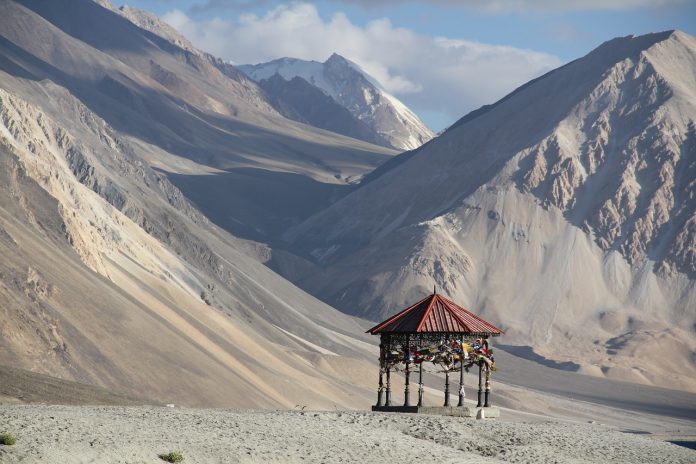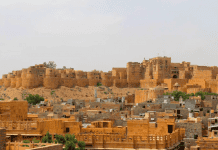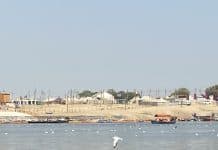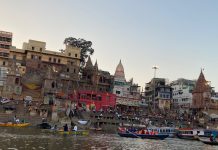It was truly an exhilarating experience to visit Ladakh. Still untouched by urban jingbang, this far-flung and virgin snow desert with an air of enigma is a tourist’s target with a difference. The topography varies in height between 8,000 to 15,000 feet and is referred to as the “roof of the world”. There are parched backwoods of stone and sandy deserts with tiny specks of green oasis popping up recurrently. From the valleys of Ladakh rise steep mountains in rich hues of beige and auburn to ochre and tawny. Serrated snow-covered peaks and mountains curved by the action of colossal glaciers lend this vast land a magnetism distinctively its own. Traditional prayer flags greet you at every turn.
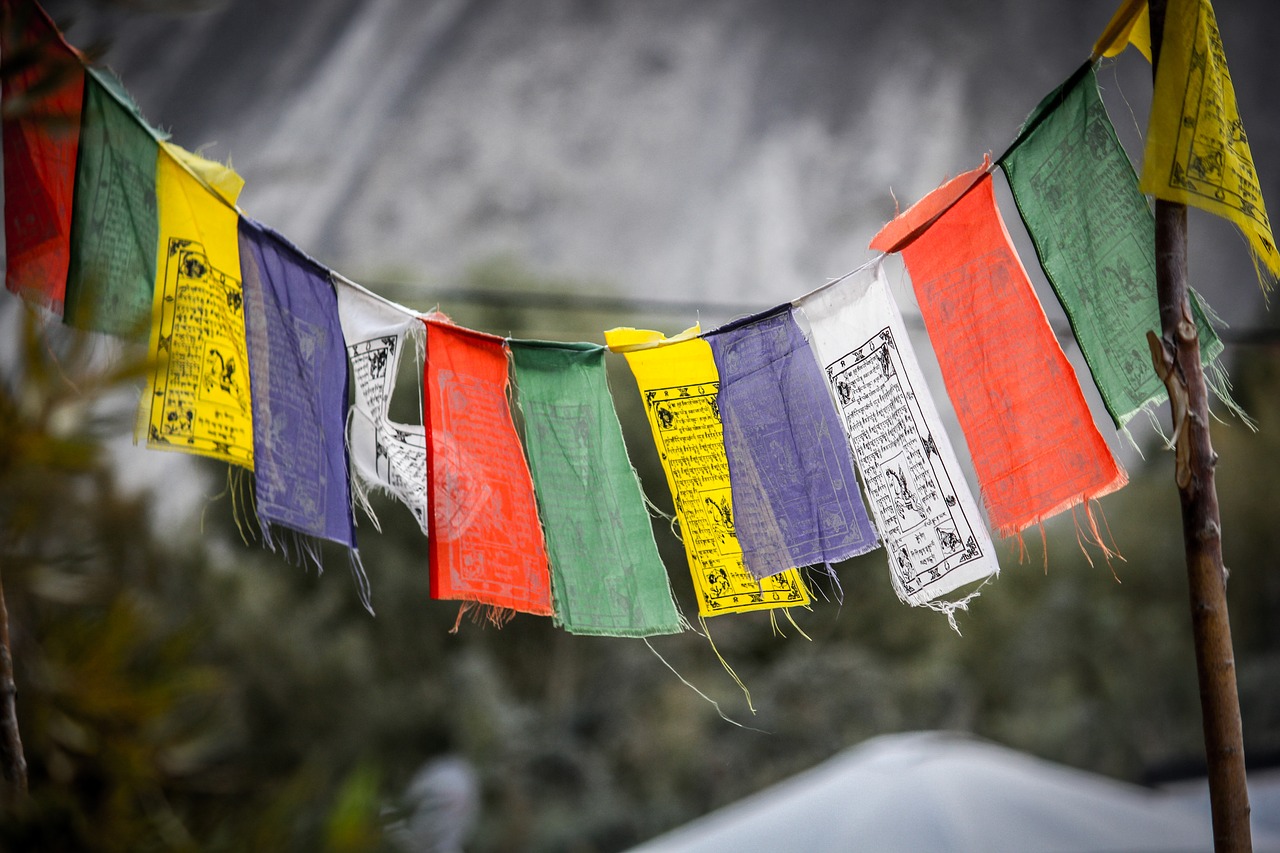
Leh, the capital of Ladakh, is the aerial entrance to the region. A large oasis on the banks of Indus river, it is encircled with tall willows and poplar trees. Leh was part of the Silk Route where caravans arrived from Lhasa, laden with silk, rugs and velvet from China, which were traded with cotton, tea, and sugar from India.
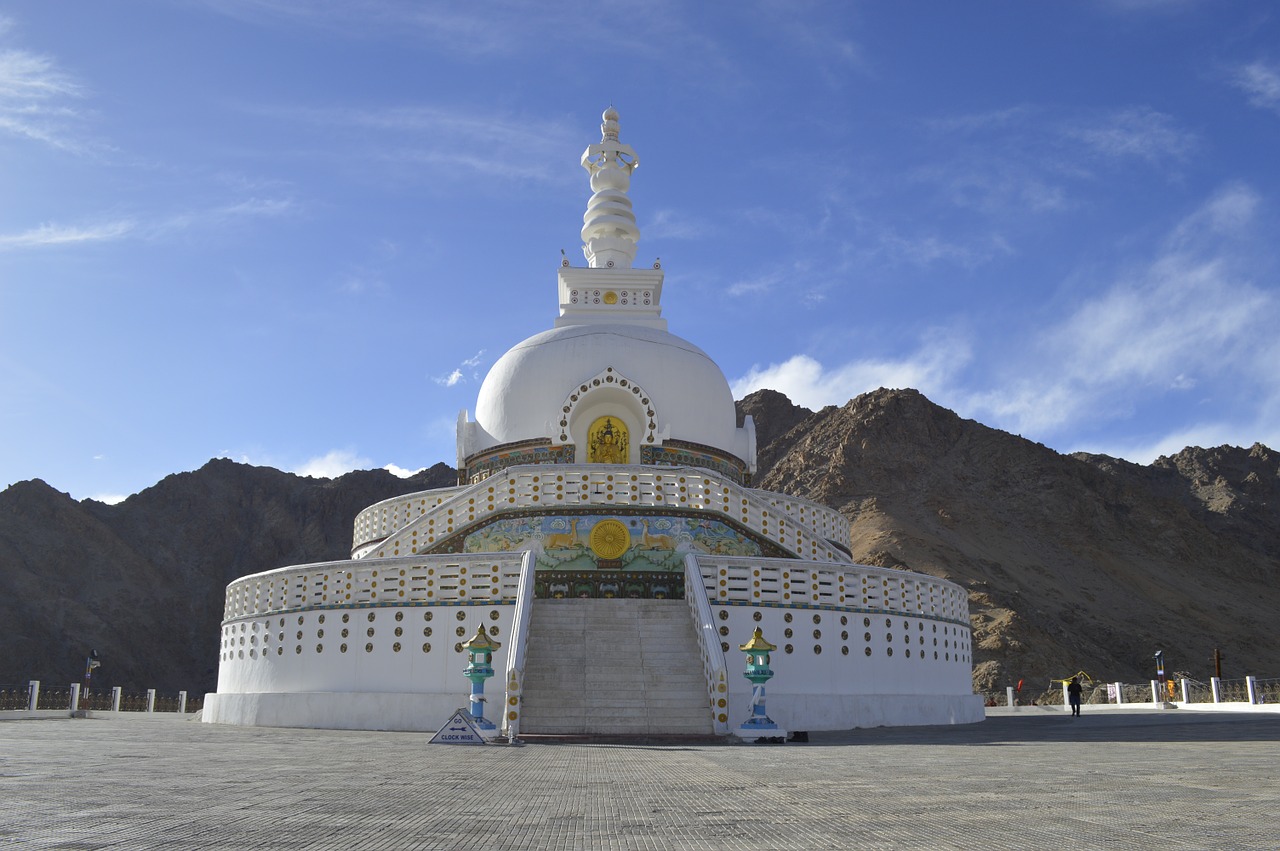
My visit to Shanti Stupa revealed a panoramic view of the transition from the lush green landscape of Leh to the dusty plains and mountains beyond. This beautiful contemporary Buddhist monument on a hillock on the outskirts of Leh was inaugurated by His Holiness the Dalai Lama in 1985. The altar is adorned with festoons and artifacts in garish colors.
The traditional part of Leh has narrow lanes peppered with terraced roofs of houses jammed against one another. The modern zone is growing fast with the increasing arrival of tourists. At one end of the town, built into a hill, is the Royal Palace of nine floors. We spotted whitewashed Chortens, stone symbols of man’s relationship with the universe.
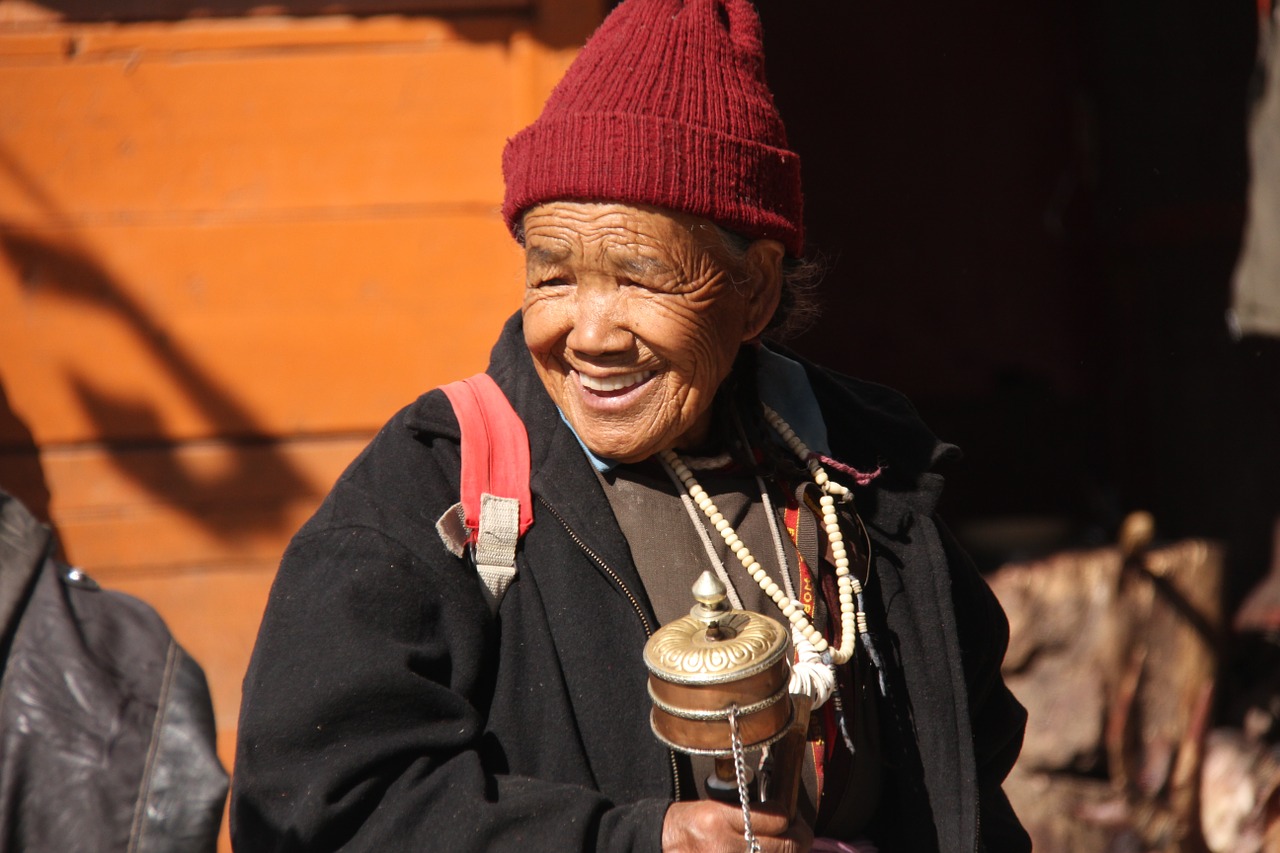
The people of Ladakh
Ladakhis are robust with hardy features and their wrinkled, weather-beaten faces reveal the climatic conditions they endure. The people don wide-skirted robes, bright sashes, and quaint stove-pipe hats. Some turn their prayer wheels while others count their beads with lips moving in silent prayer. Julie, the owner of our guest house, invited us to his residence and I found the huge kitchen, lined with burnished copper vessels, to be a splendid spectacle.
What to taste
It is very important to get acclimatized before you plan a trip to Ladakh. As my friend experienced mountain sickness, nausea, and dizziness due to the high altitude, our hosts were kind enough to send us salted butter tea, which helped restore her sanity. A few of the foods to try while here are chhupri (yak milk cheese), tigmo (steamed bread with stew), momos, thupka, and qahwa.
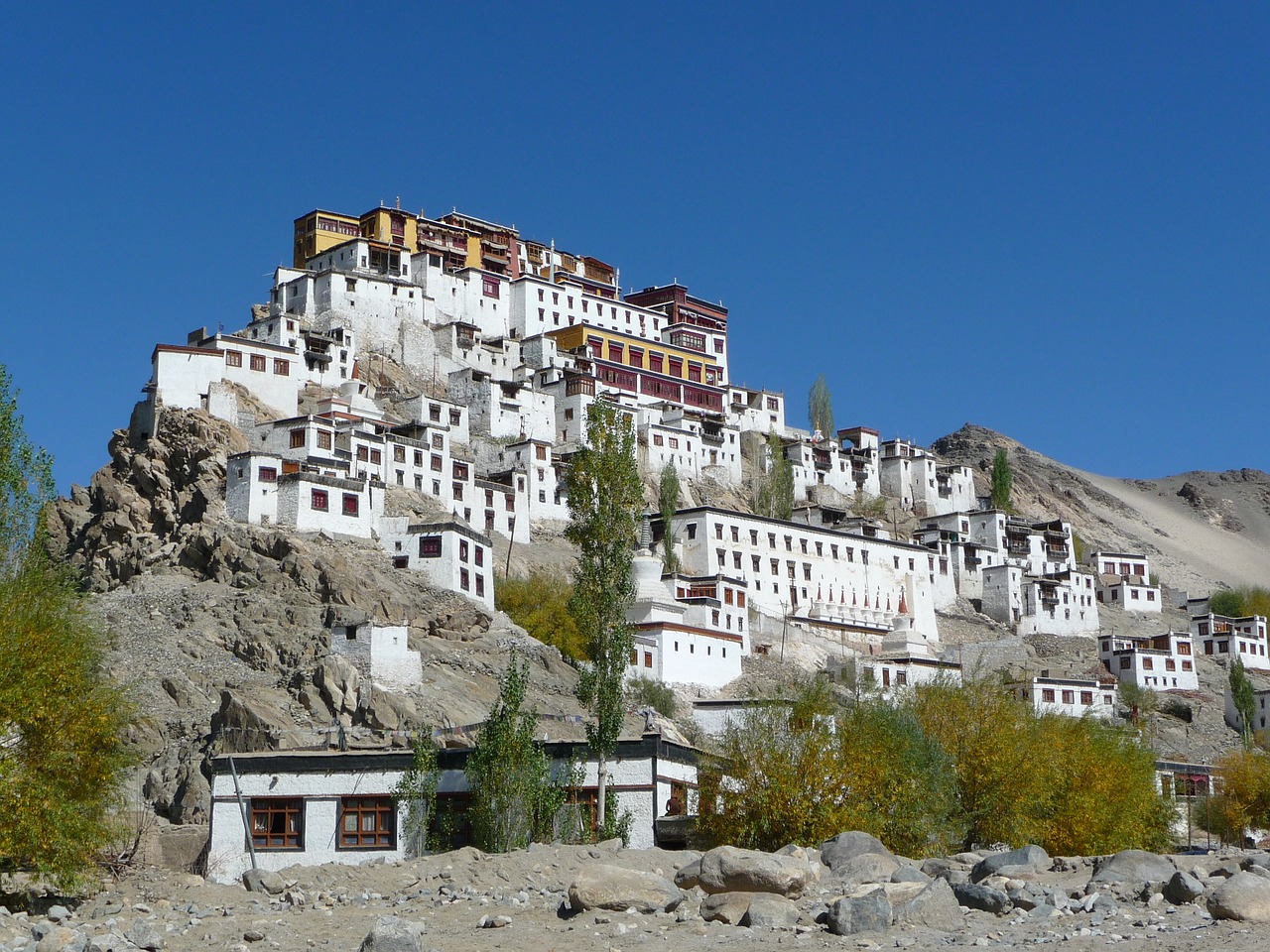
Mystic monasteries
With a predominantly Buddhist population, the religious, cultural and social life in Ladakh revolves around more than a dozen monasteries called gompas. Hemis, Thiksay, and Lamayaru top the list of tourist itineraries. The largest gompa, Hemis, is skillfully masked in a mountain range, which can be accessed after crossing the Indus.
Thicksay rests atop a hill with precipitous inclines and built on many stratums provide an impressive and panoramic view of the Indus Valley. The main attraction here is a 40-foot tall idol of Buddha. Set in a fertile valley, Alchi is charming and Chembrey offers a breathtaking view of the adjoining valley.
Pangong Tso Lake
The most pictured, scenic and secluded spot in Ladakh is the Pangong Tso Lake. A 165km drive from Leh via Changla Pass and Tangste village took us to this beautiful lake. At 17,300 feet, Changla is the second-highest motorable pass in Ladakh. A stunning view of snow-laden mountain peaks is on offer here. The salt water lake of Pangong is at a height of 14,400 feet. About one-third of it is in India and the rest is in China. The interesting fact is that its crystal clear waters swing in colors ranging from emerald green to various shades of blue, which is in severe disparity to the arid brown-colored hills neighboring Pangong Tsu. It contains no marine life and we could safely wade through it for photo ops.
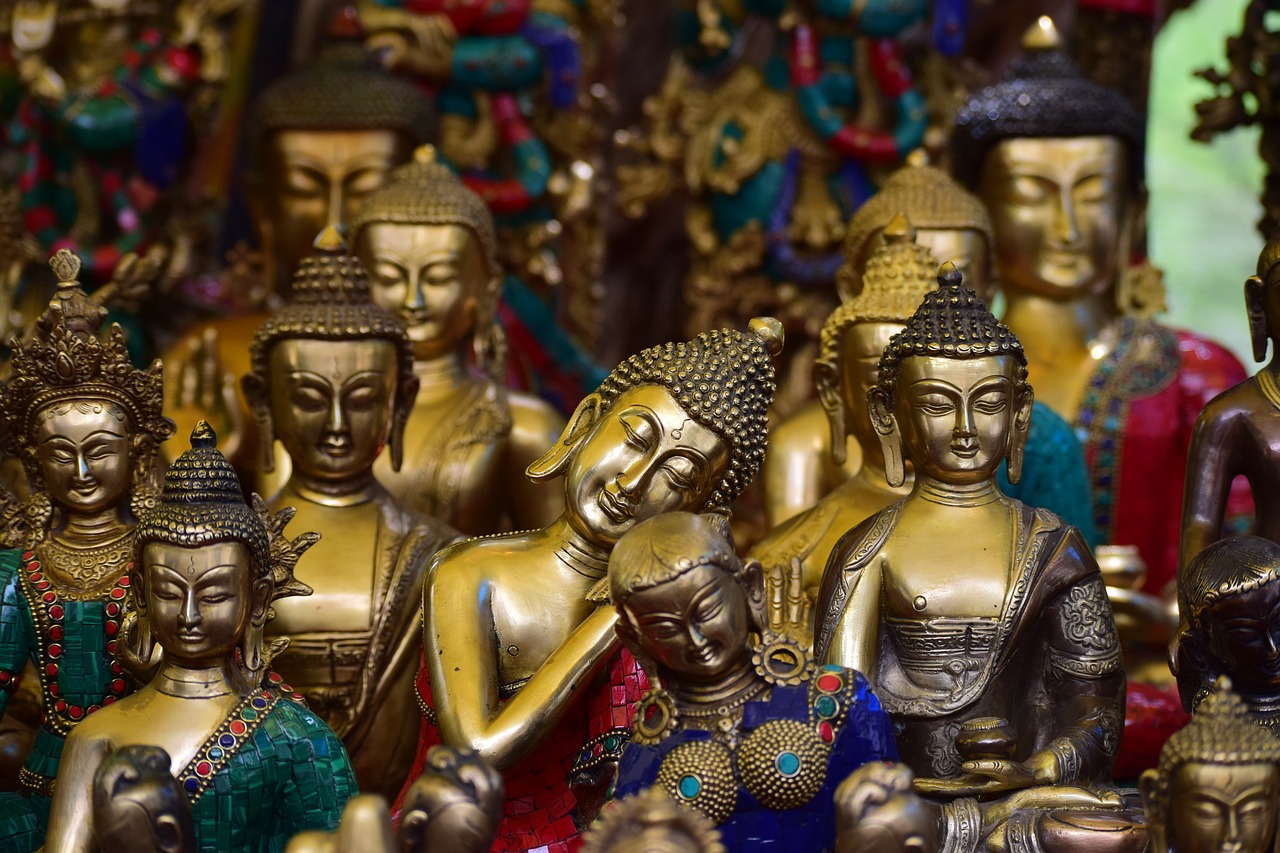
Shopping galore
Apricot sellers sit on street corners and the high street in Leh has stalls selling household provisions. A few hawkers put up a table spread of local handicrafts, statues of Buddha, prayer bells/wheels and similar stuff.
The sense of compelling peace was so overwhelming that, as soon as I bid adieu to this serene land, the thought of going back to the chaos of the city induced withdrawal pangs in me!
Image courtesy: Pixabay


